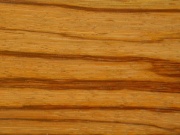Difference between revisions of "Marblewood"
Jump to navigation
Jump to search
(username removed) |
(username removed) |
||
| Line 10: | Line 10: | ||
== Authority == | == Authority == | ||
| − | * | + | * G.S.Brady, ''Materials Handbook'', McGraw-Hill Book Co., New York, 1971 |
| − | * | + | * Random House, ''Webster's Encyclopedic Unabridged Dictionary of the English Language'', Grammercy Book, New York, 1997 |
* ''The American Heritage Dictionary'' or ''Encarta'', via Microsoft Bookshelf 98, Microsoft Corp., 1998 | * ''The American Heritage Dictionary'' or ''Encarta'', via Microsoft Bookshelf 98, Microsoft Corp., 1998 | ||
| − | * | + | * Website address 1 Comment: www.gilmerwood.com |
[[Category:Materials database]] | [[Category:Materials database]] | ||
Revision as of 06:31, 24 July 2013
Description
An ebony wood from the tree Diospyros kurzii native to India and the Andaman Islands. The heavy, durable wood is black with yellowish stripes forming a marble like grain pattern. Like other ebonies, it is highly valued for furniture, inlay and decorative items. Marblewood is resistant to insects and takes a high polish. Other trees also called marblewood are Marmoxylon racemosum of South America, Diospyros marmorata of southern Asia and Olea paniculata of Australia.
Synonyms and Related Terms
Andaman marblewood; ebony; Diospyros kurzii; Marmoxylon racemosum; Diospyros marmorata; Olea paniculata
Authority
- G.S.Brady, Materials Handbook, McGraw-Hill Book Co., New York, 1971
- Random House, Webster's Encyclopedic Unabridged Dictionary of the English Language, Grammercy Book, New York, 1997
- The American Heritage Dictionary or Encarta, via Microsoft Bookshelf 98, Microsoft Corp., 1998
- Website address 1 Comment: www.gilmerwood.com
